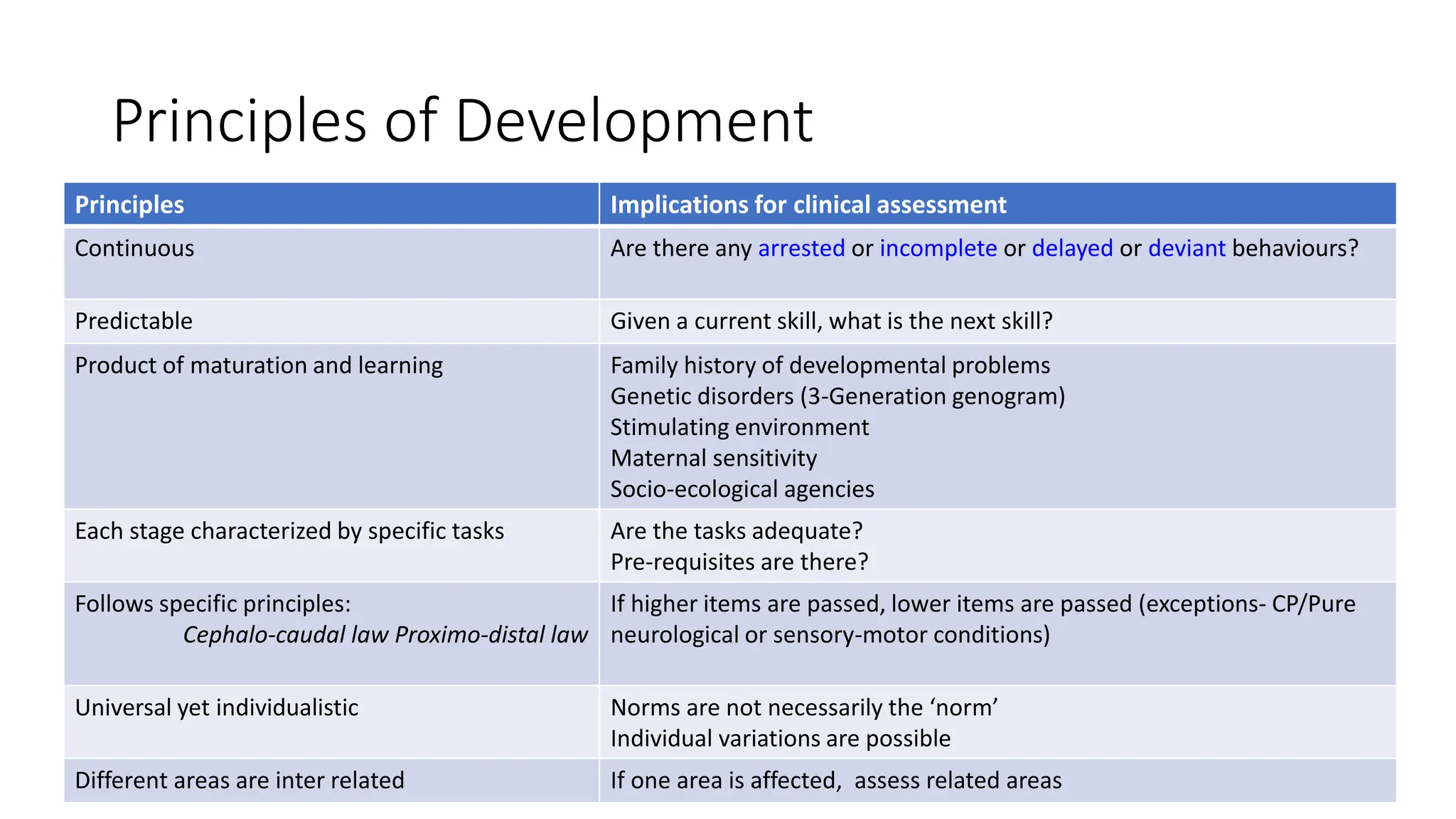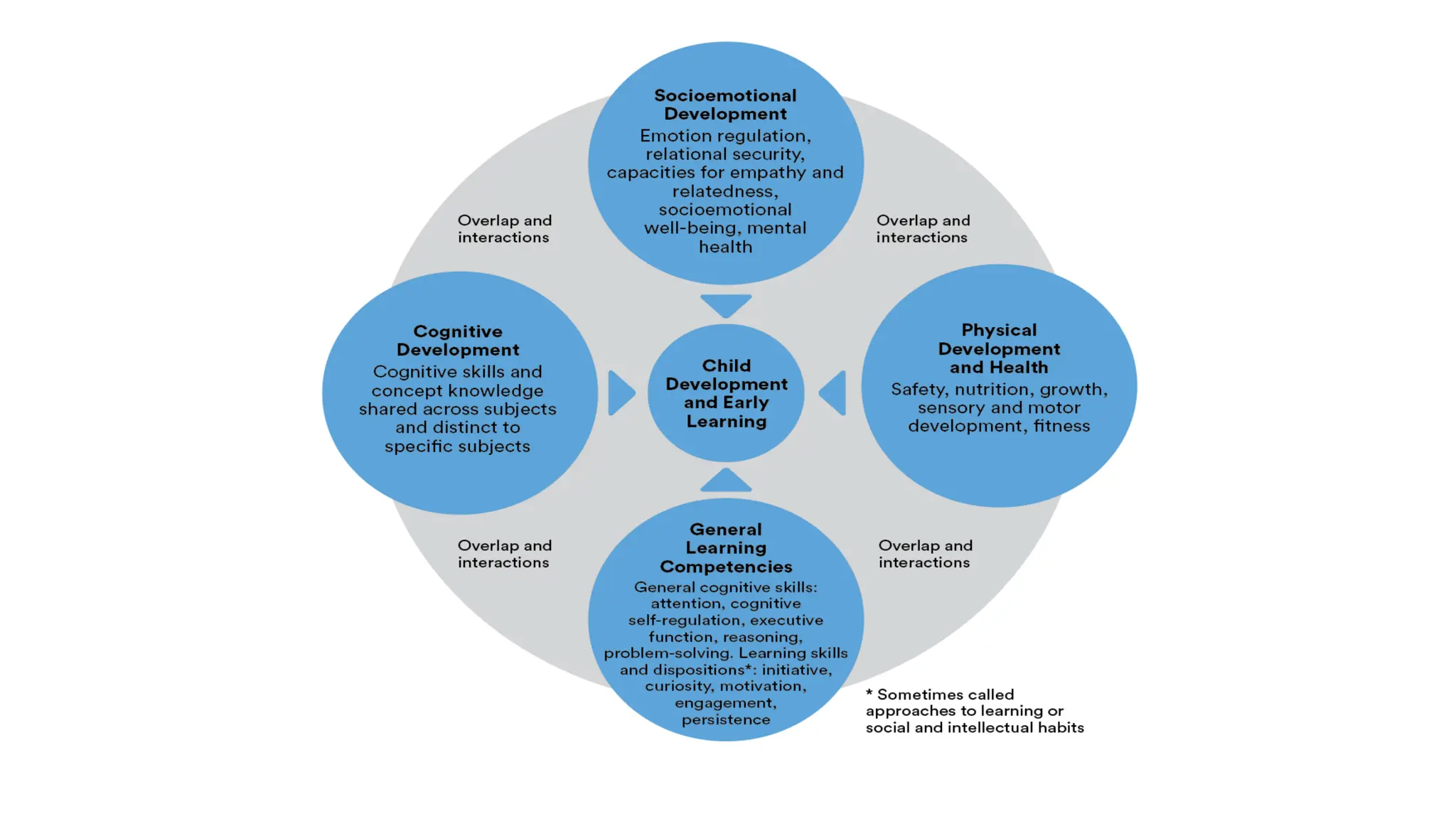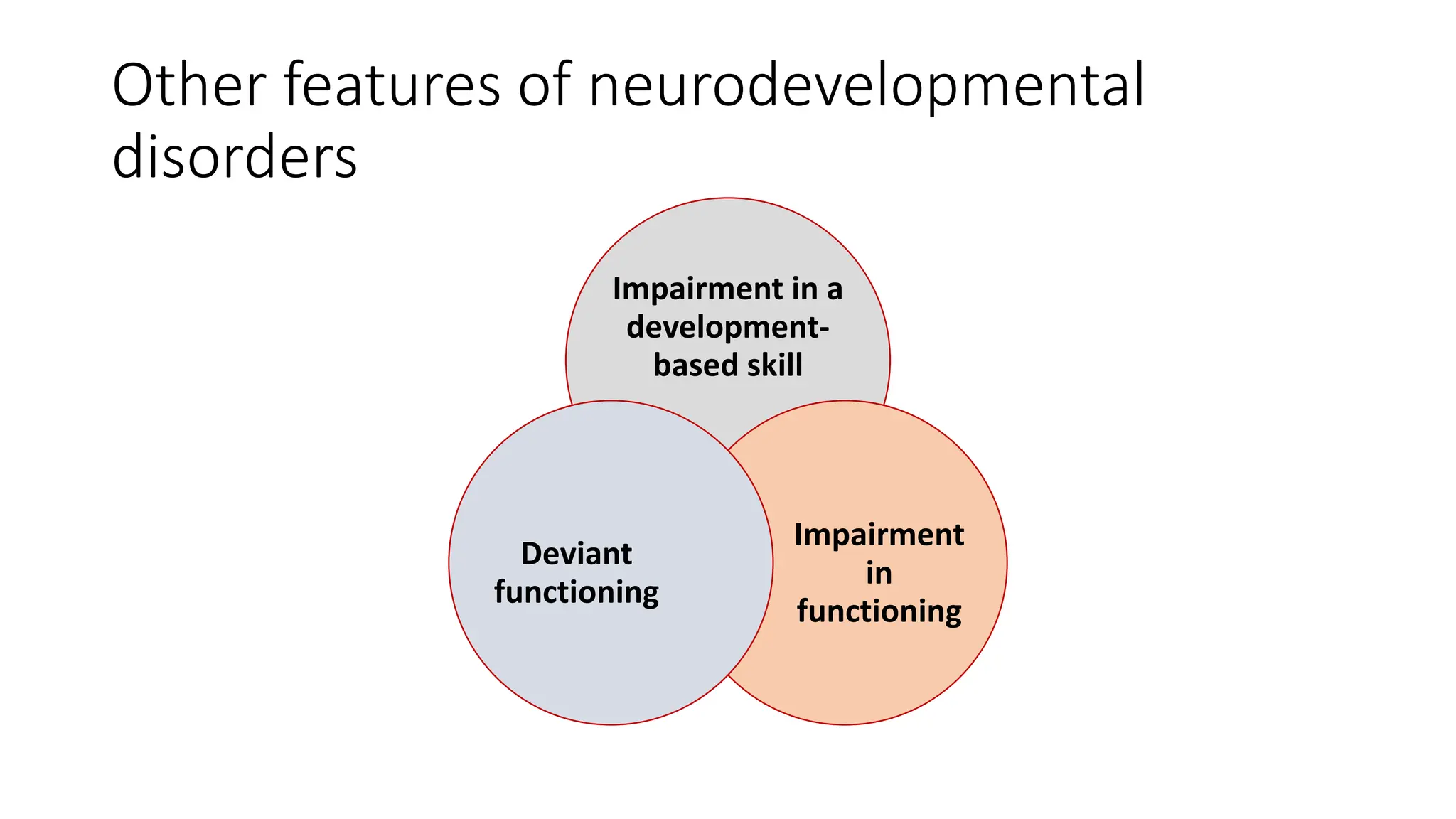Development follows predictable patterns characterized by progressive changes from conception through adulthood. It is influenced by both innate and environmental factors. Developmental delays and disorders represent deviations from typical development expectations and can impair physical, cognitive, and psychological growth. They are often lifelong conditions that benefit from early identification and multidisciplinary intervention, though symptoms may lessen over time. A biopsychosocial approach addressing medical, psychological, social, and developmental needs is important for assessment and management.







































